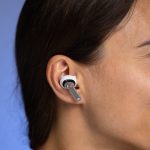<p>As part of its mission to promote health, keep the world safe and serve the vulnerable, the World Health Organization (WHO) is exploring the potential of mobile phone technology to widen its scope in addressing a range of global public health issues. </p><p>In response, the Department of Control of Neglected Tropical Diseases recently converted a 2018 pictorial training guide on neglected tropical diseases of the skin (the so‐called skin NTDs) into an interactive new mobile phone application.</p><p><em>“This software application will quickly allow health care workers and the public to get information about a specific disease – such as its clinical features, management and geographical distribution – and also provide a list of potential diagnosis”</em> said Dr Jose Postigo, Medical Officer, Skin NTDs team, WHO Department of Control of Neglected Tropical Diseases. “<em>All it takes is to access the interactive menu and a few clicks to identify the skin condition.”</em></p><p>The application also allows rapid exchange of information via a chat box through which general questions can be answered promptly. </p><p>In 2018, WHO published <a href="https://www.who.int/publications/i/item/9789241513531">Recognizing neglected tropical diseases through changes on the skin: a training guide for front-line health workers</a>,
a comprehensive guide to identifying skin NTDs through signs and symptoms of the skin that provides information on how to diagnose and manage common skin problems that nonspecialized front-line health workers may encounter.</p><p>“<em>This training guide is now updated with recent information and has been translated into an easy-to-use interactive mobile app available free of charge in both </em><a href="https://play.google.com/store/apps/details?id=com.universaldoctor.skin_ntds&hl=en_US"><em>Android</em></a><em> and </em>
<a href="https://apps.apple.com/us/app/skin-ntds-app/id1499080526"><em>iOS</em></a><em>”</em>, said Dr Kingsley Asiedu, Team Leader, Skin NTDs. “<em>We are therefore inviting everyone involved in this area of work to download this application and use it during workshops and other training activities.”</em></p><p>Front-line health workers will also find it useful during their daily clinical practice.</p><p>The NTD Department intends to use the launch as a forum to gather feedback and is inviting users to provide input and suggestions as it innovates another version that will be translated into French and Spanish, with an in-built database on clinical
features of diseases and geographical origins of patients.</p><p>Please send comments and suggestions to <a href="mailto:postigoj@who.int">postigoj@who.int</a> </p>
Powered by WPeMatico






